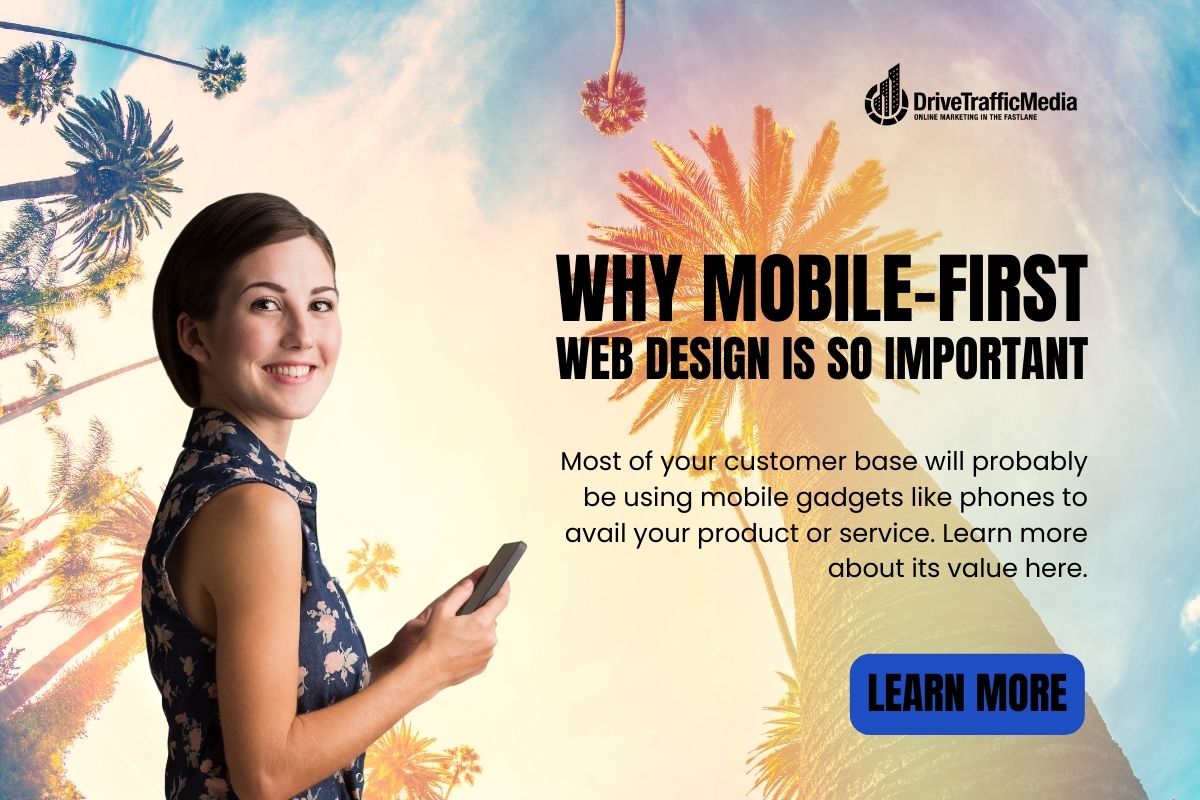Mobile-first web design is a strategy where web designers in Los Angeles prioritize designing for mobile devices before desktop computers. The rise in mobile internet usage has made the mobile-first design more critical. Hence, if your website isn’t mobile-first already, you must do your best to make it workable for mobile gadgets as soon as possible, lest you lose potential customers!
Here are five reasons why mobile-first web design is so important.

Mobile Usage is on the Rise
Mobile usage is increasing at an incredible rate. In 2021, there will be more than 3.8 billion mobile users worldwide, and this is expected to grow to 4.3 billion by 2023. People use their mobile devices for everything from browsing news articles to paying bills to buying groceries to connecting with long-distance loved ones, and this trend is unlikely to die down soon. Therefore, if your website is not optimized for mobile devices, you risk missing out on a significant portion of your target audience.
Google Prioritizes Mobile-Friendly Websites
In 2015, Google updated its search algorithm to prioritize mobile-friendly websites. Websites that are optimized for mobile devices are likely to rank higher in Google search results than those that are not, especially if the search was done on a mobile device. As we’ve already discussed, over half the world’s population do their work on mobile devices!
If your website isn’t mobile-first or at least mobile-friendly, you will likely receive fewer visitors from Google searches. Mobile-first design can help you create a website that is mobile-friendly and optimized for search engines.
Mobile Users Have Different Needs
Mobile users have different needs and preferences than desktop users, and they often seek quick access to information rather than an in-depth analysis. They are also more likely to be on the go and, therefore, need a website that is easy to navigate with one hand and with as few clicks as possible. For example, if you’re commuting to work, you’ll likely need one hand to navigate the website and the other to hang onto the bar to keep yourself from falling!
By designing for mobile devices first, you can develop a website that meets the needs of mobile users while still providing a good experience for desktop users.
Faster Loading Times
Mobile devices typically have slower internet connections than desktop computers. Sure, they’re handy, but they’re still not as large as laptops and computers. Therefore, designing websites that load quickly on mobile devices is essential. Mobile-first design can help you create a website optimized for mobile devices, with smaller images and fewer resources, resulting in faster loading times. Faster loading times not only improve the user experience but can also help to improve search engine rankings.
Cost-Effective
Designing for mobile devices first can be a cost-effective approach. With the mobile-first design, you are designing for the smallest screen first and then working up to larger screens. This approach ensures that the most critical content is displayed on all devices without expensive redesigns, like building a desktop website first and then shuffling things around to make it work for mobile websites too. It also means that you can focus your resources on designing a great mobile experience rather than trying to create a one-size-fits-all website.
Conclusion
In conclusion, mobile-first web design is critical in today’s mobile-dominated world. Mobile usage is increasing, Google prioritizes mobile-friendly websites, mobile users have different needs, faster loading times are essential, and it is a cost-effective approach. By designing for mobile devices first, you can develop a website that meets the needs of your target audience and provides a better overall user experience.
If you need help creating a mobile-first web design for your Los Angeles business, call Drive Traffic Media for assistance. We are a web design company that would be pleased to extend a helping hand to anybody in need regarding web design and other digital advertising strategies. Call us at (949) 800-6990 or (310) 341-3939.
